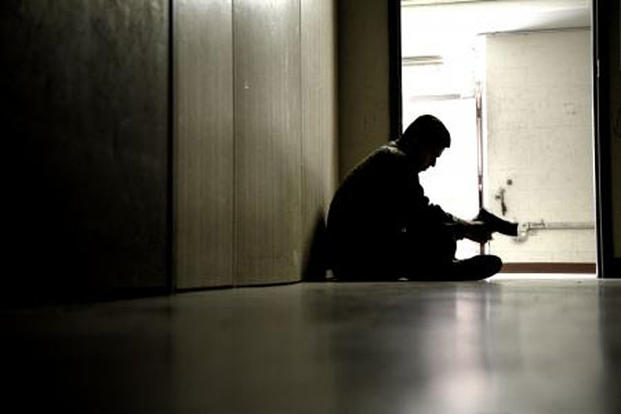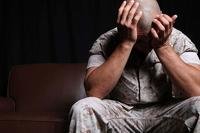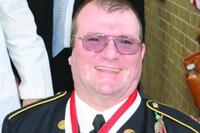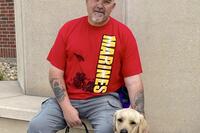Brandon Young is a former U.S. Army Ranger, member of Team RWB and the chief advancement officer for the Tennyson Center for Children, helping traumatized and abused children stabilize, heal and reintegrate back into their community.
"You have PTSD, Brandon ..."
The certainty of her words hung in the air between us as my tears fell to the floor. Her words were as flat as the white coat she wore that said "Dr."
"That's it? Just like that?" was all I could muster. I was stunned by how directly and emotionlessly it had unfolded.
"Did you really think it was going to be any other way?" Kindly, but direct.
"No ... " I really didn't, and I knew it. It was the beast lying in the dark all the while.
It was 2014, five years after I had separated from the U.S. Army and three years after giving my life to Christ, a choice that led me to Team RWB, where we work relentlessly to enrich the lives of thousands of veterans. We meet them where they are at across the nation. In towns and big cities, on military posts and bases, and in their pain, their fear and uncertainty veiled behind the bravado of the warrior culture.
Though a shock initially, a sense of relief washed over me in the weeks following my diagnosis. In the military, we learned to identify our target -- find, fix and finish -- but I just hadn't been able to put my finger on what was wrong. During my post-service years, I felt as if I had a shadow over me. The barrier between my family and me had ripped us apart. I finally had a name for what I was experiencing. I had identified the spectre in the dark, and this awareness empowered me.
At this same time, within the leadership of Team RWB, we had "developed a program of research focused on defining and measuring [our] impact to establish leading practices, glean insights for innovation, and maintain accountability and transparency with key stakeholders (funders, partners, and organization members)."
It was critical for us to "say what we meant, and do what we said," enriching veterans' lives with a combination of health, genuine relationships and a sense of purpose. I had been a member of the executive team for a year at that point, initially drawn to RWB because it was the first veterans service organization I could see myself in. Team RWB had figured out that the false narrative in America -- the hero or victim veteran persona -- was wholly inadequate to describe us. And wholly unhelpful for our reintegration home.
I, like other veterans, sought more opportunities to serve, to connect to our families and to lead in our communities. Though I couldn't figure out how to get there on my own, I didn't want to feel pitied or like a project.
Through this effort to unlock actionable insights and hold ourselves accountable to veterans, funders and America, what emerged has been a translation of the years of wandering without a name into a tool designed to see those who need us most. A light in the darkness. A rosetta stone for the wandering and hurting.
The Enriched Life Scale (ELS) matters because we can now "see" people who are struggling right before us through the lens of mental health, physical health, genuine relationships, sense of purpose and engaged citizenship. People like me, who had a great job, an education and were providing for our families, all while hurting deeply on the inside -- trapped without the right words to describe what feels like failure and darkness hiding behind the veneer of normal and successful.
Critical to the construction of the tool has always been the combination of science and lived experience, where systematic investigation meets user-centered design. With Senior Research Scientist Caroline Angel, R.N., Ph.D., at the helm of the approach, we were able to blend insights of the veteran experience for cultural authenticity with a scientific process for the good of those we aimed to serve. We translated and transformed, to help identify those in need and how our approach was helping them.
The ELS tool is a flashlight that allows us to see the person, see where there may be struggles and walk them on a path to enrichment. Walk them home, together, where we all so desperately ache to be. As a co-author of the ELS, this may very well be what fills me with the most joy regarding this project. We are illuminating a path through uncertainty that lies before us -- a way for veterans to safely identify where they are at in their journeys and a culturally competent path to enrichment.
We built an approach that speaks "veteran," with and for the people we aim to serve. In this process, we discovered that everything is not "OK" but that we could do something about it. The ELS moves past the old catastrophe-oriented tools of assessment that, basically, aim to discover if you're going to commit suicide or are contemplating it. No veteran is going to admit that to a white coat until they have reached the end of the line because every service member has been taught to overcome adversity and drive on to complete the mission, whatever the cost. We take this very seriously not because we aim to be rigid or difficult, but because we love who we stand to protect so much, Americans.
The ELS can capture with one tool information that has typically been assessed with multiple instruments. It unlocks what's going on inside someone's life and focuses us to direct vulnerable people to life-giving solutions. We also unlocked a key insight, one that played out in a small Department of Veterans Affairs hospital room for me. That amongst veterans, "those who experienced combat and had service-related injury had significantly lower scores for all subscales compared with those who had no combat experience or service-related injury." Mental health being the very lowest of their scores.
Partnerships are emerging now that will take this tool to the next level, empowering the highest levels of American leadership to look into the military, guided by the insights that the ELS can unlock, to identify where service members are at before separation. This will not only allow us to see those who are most vulnerable in their transition, but will also allow us to walk with them into life-enriching practices that will help them to fully come home to the community that we all so love.
Communities like mine, nestled amongst the foothills of the Rocky Mountains where I live a rich life full of family, faith and meaning. Where I still have PTSD, but where PTSD doesn't have me.
-- The opinions expressed in this op-ed are those of the author and do not necessarily reflect the views of Military.com. If you would like to submit your own commentary, please send your article to opinions@military.com for consideration.















